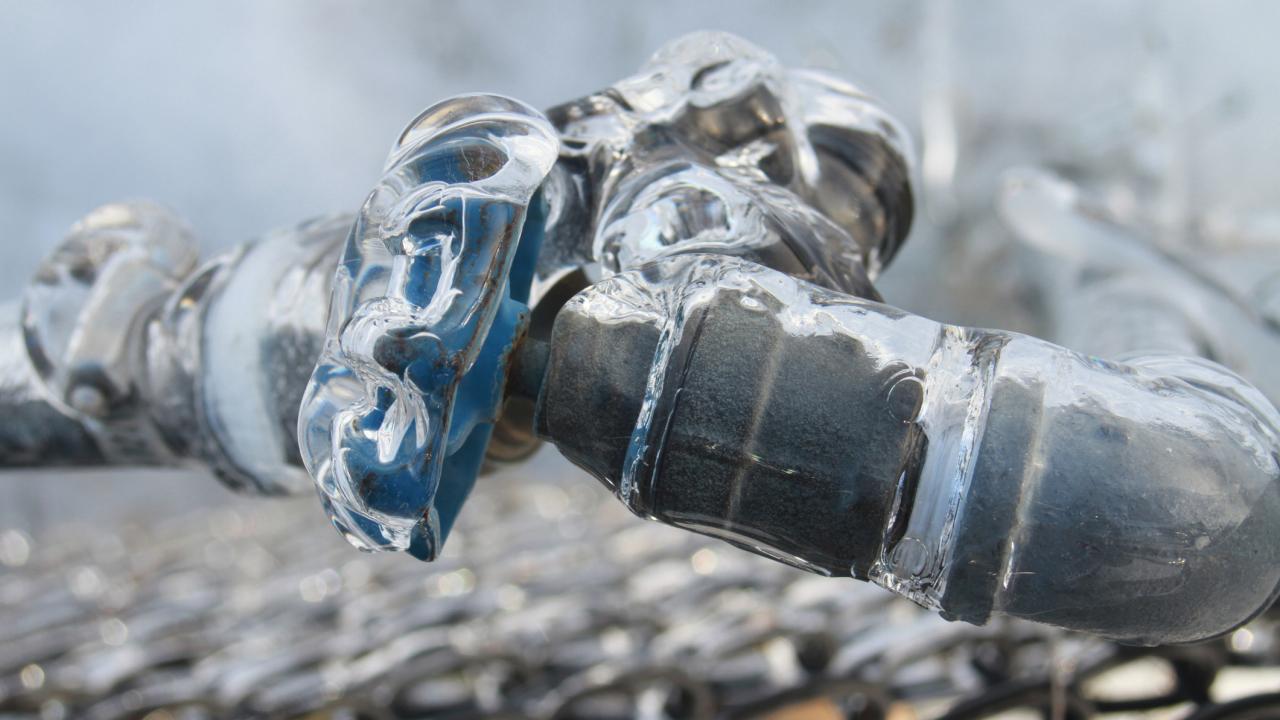Preventing Your Pipes from Freezing: Top Strategies
Preventing Your Pipes from Freezing: Top Strategies
Blog Article
The publisher is making a number of good points related to Winter Plumbing Precautions: Preventing Frozen Pipes overall in the article below.

Cold weather can wreak havoc on your pipes, specifically by freezing pipes. Here's just how to stop it from taking place and what to do if it does.
Intro
As temperatures drop, the threat of icy pipes increases, possibly causing pricey repair services and water damage. Recognizing exactly how to prevent icy pipes is essential for homeowners in cool climates.
Comprehending Icy Pipes
What creates pipes to ice up?
Pipes ice up when exposed to temperature levels below 32 ° F (0 ° C) for expanded periods. As water inside the pipelines freezes, it broadens, taxing the pipe wall surfaces and potentially creating them to burst.
Dangers and problems
Icy pipes can lead to water system interruptions, home damages, and pricey fixings. Ruptured pipelines can flooding homes and cause comprehensive architectural damages.
Indicators of Frozen Piping
Recognizing frozen pipes early can prevent them from bursting.
How to identify frozen pipes
Look for decreased water circulation from taps, unusual smells or sounds from pipelines, and noticeable frost on subjected pipes.
Prevention Tips
Insulating at risk pipelines
Cover pipes in insulation sleeves or utilize heat tape to protect them from freezing temperature levels. Concentrate on pipes in unheated or exterior locations of the home.
Heating techniques
Maintain interior spaces properly warmed, particularly areas with pipes. Open closet doors to allow cozy air to distribute around pipelines under sinks.
Securing Outdoor Pipes
Garden pipes and outdoor taps
Disconnect and drain yard hose pipes prior to winter. Mount frost-proof spigots or cover outside taps with insulated caps.
What to Do If Your Pipes Freeze
Immediate activities to take
If you suspect frozen pipes, maintain taps open to relieve pressure as the ice thaws. Make use of a hairdryer or towels taken in hot water to thaw pipes slowly.
Long-Term Solutions
Architectural modifications
Take into consideration rerouting pipes away from exterior wall surfaces or unheated areas. Add additional insulation to attics, cellars, and crawl spaces.
Updating insulation
Purchase premium insulation for pipes, attics, and wall surfaces. Appropriate insulation helps keep constant temperatures and lowers the danger of icy pipelines.
Conclusion
Preventing icy pipes calls for positive measures and fast responses. By comprehending the causes, indications, and safety nets, property owners can secure their plumbing during winter.
6 Proven Ways to Prevent Frozen Pipes and Protect Your Home
Disconnect and Drain Garden Hoses
Before winter arrives, start by disconnecting your garden hoses and draining any remaining water. Close the shut-off valves that supply outdoor hose bibs and leave the outdoor faucet open to allow any residual water to drain. For extra protection, consider using faucet covers throughout the colder months. It’s also important to drain water from any sprinkler supply lines following the manufacturer’s directions.
Insulate Exposed Pipes
Insulating your pipes is an effective way to prevent freezing. Pipe insulation is readily available at home improvement stores and is relatively inexpensive. Pay close attention to pipes in unheated areas such as the attic, basement, crawl spaces, or garage. Apply foam insulation generously to create a buffer against the cold. You can also wrap your pipes in heat tape or thermostat-controlled heat cables for added warmth.
Seal Air Leaks
Inspect your home for any cracks or openings that could let in cold air. Seal any holes around the piping in interior or exterior walls, as well as the sill plates where your home rests on its foundation. Additionally, make sure to keep your garage door closed unless you’re entering or exiting. Leaving it open creates a significant air leak that can lead to frozen pipes.
Allow Warm Air Circulation
During cold snaps, it’s essential to allow warm air to circulate evenly throughout your home. Leave interior doors ajar to promote better airflow. Open kitchen and bathroom cabinets to help distribute heat consistently around the rooms. If you have small children or pets, be sure to remove any household chemicals or potentially harmful cleaners from open cabinets for safety.
Let Faucets Drip
A small trickle of water can make a big difference in preventing ice formation inside your pipes. When temperatures drop significantly, start a drip of water from all faucets served by exposed pipes. This continuous flow helps prevent the water from freezing. Additionally, running a few faucets slightly can relieve pressure inside the pipes, reducing the chances of a rupture if the water inside does freeze.
https://choateshvac.com/6-proven-ways-to-prevent-frozen-pipes-and-protect-your-home/

I was made aware of that article about Winter Plumbing Precautions: Preventing Frozen Pipes through an associate on a different web address. Appreciated our blog? Please share it. Help another person check it out. We value your readership.
Call Today Report this page